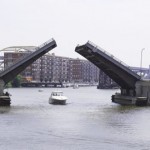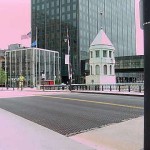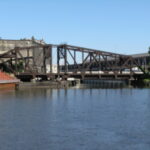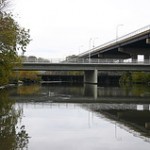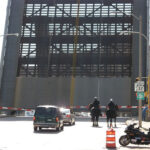Blog
Milwaukee Bridge Overview
GATHERING BY THE WATER
In the Ojibwe language, ominowakiing (or Milwaukee) means “Gathering place [by the water].” One of the main reasons Milwaukee thrived in its inception as a commercial center was due to its easy access to Lake Michigan and the inland access provided by its three major rivers.
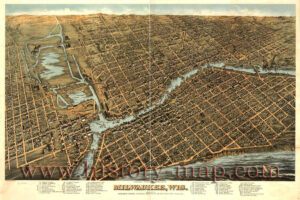
Beginning in the early 1600s, traders, trappers, missionaries, and French explorers used the Menomonee, Milwaukee, and Kinnickinnic Rivers as water routes for transportation. As European settlers moved into the area, local rivers became commercial and shipping arteries for wheat, lumber, coal, and other products. Over time, roads and railways gradually replaced rivers as primary transportation routes, and with this shift came an abundance of bridges linking different areas of Milwaukee.
TYPES OF MILWAUKEE’S BRIDGES
- A Bascule Bridge (sometimes referred to as a drawbridge) is a movable bridge with a roadbed that swings upward and is continuously balanced by a counterweight. The roadbed/span can be one or two leaves and provides clearance for any vessel height. This is the most common type of movable bridge because it opens quickly and requires relatively little energy to operate.
- A Vertical-Lift Bridge (or lift bridge) is a type of movable bridge with a span that rises vertically while remaining parallel with the deck. Generally speaking, longer span lift bridges cost less to build than other movable bridges, such as bascules. The biggest disadvantage of the lift bridge is the height restriction for vessels passing underneath as a result of the deck remaining suspended above the waterway.
- A Swing Bridge is a movable bridge that pivots horizontally from a vertical locating pin and support ring, usually at or near its center of gravity. In its closed position, a swing bridge allows railway or vehicular traffic to cross a river or canal. When a vessel needs to pass under the bridge, road traffic is stopped and motors rotate the bridge approximately 90 degrees horizontally. This provides clearance for vessels of any height but restricts the width of the waterway through which the vessel can pass. This type is commonly used for railroad crossings.
- A Fixed Bridge is a standard bridge that does not move. It is the most common bridge type and does not allow for larger boat traffic to pass below.
BRIDGE OPERATOR HOUSES
A movable bridge requires an operator to raise the bridge for barges, ships, and other tall vessels, such as sailboats. Bridge operators are not only responsible for communicating and ensuring safe passage (see MKE’s bridge operations procedures), but also for maintaining the complex mechanisms of a bascule or lift bridge.
Bridge operator’s houses contain the electrical controls and provide shelter for the bridge operator. They are relatively small structures with windows on all sides so that the operator is able to view incoming vessels from all directions. Bridge operator’s houses are one of the most distinctive and recognizable components of Milwaukee’s bridges. The design aesthetic of operator’s houses range from simple to ornate, and often complement the overall design of the bridge. Their styles reflect the time period in which they were built, and examples include Neoclassical, Art Deco, and Modern designs. Common to all is the tower-like profile and window-filled top story, which enable the bridge operators to view passing vessels.
While many bridge houses remain in Milwaukee, only five were staffed by a bridge operator in 2011. Other movable bridges are operated off-site by a bridge operator using remote cameras and switches, which are connected by fiber optic cables.
MILWAUKEE’S BRIDGES AT A GLANCE
- The City of Milwaukee boasts 179 bridges (pedestrian, rail, and vehicular) as of 2011, and 21 of them are movable: 8 vertical lift bridges and 13 bascule bridges.
IMPORTANCE OF MILWAUKEE’S BRIDGES
The large number of bridges in Milwaukee illustrates how important they are to the commercial vitality of the city. With traffic on certain bridges averaging 13,000 cars per day, a bridge repair or replacement can mean a major inconvenience to drivers and businesses.
Also, due to the large amount of boat traffic, it is important that boaters are aware of the procedures regarding Milwaukee’s movable bridges. For more information, see the attached operation’s guide below. The City of Milwaukee’s movable bridges are operated by the Department of Public Works.
*Proceed to the next section: Milwaukee’s Bridge War


